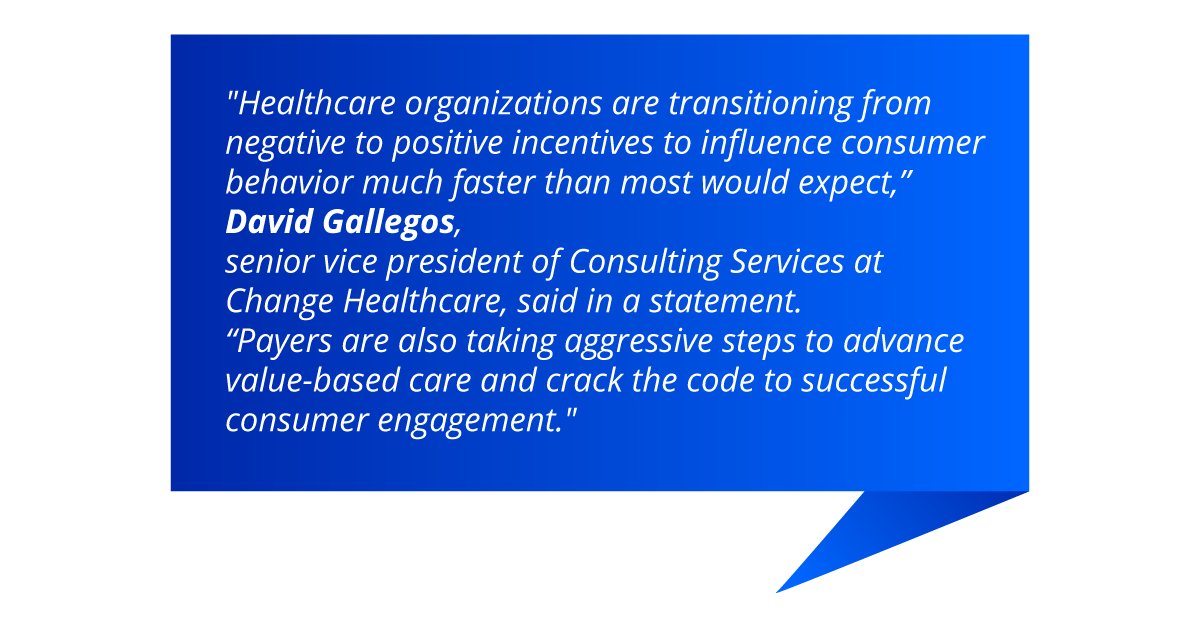
Five Steps to Healthcare Consumer Engagement: From Vision to Reality
Improved patient outcomes, increased member satisfaction, costs cut across populations. As discussed in the whitepaper Elevate Healthcare Consumer Engagement Models, the list of benefits resulting from a superior patient and member engagement model may be countless. But, how do payers and providers develop a platform designed to expand upon their current offerings? And how do they know when they reach success?
Here, we look at five steps to create a consumer engagement plan and measure implementation success.
Step 1: Determine the intended user and methods of omnichannel communication.
Patient engagement previously consisted of doctor-to-patient one-way communication, typically over a cumbersome, infrequently used portal. However, inputs to the patient's overall treatment and wellbeing will come from a variety of sources. To be fully functional, the final platform should allow secure connection for required stakeholders, including the consumer themselves, customer service personnel, care managers and providers, and specialists.

Step 2: Consider all options to foster relationships.
Between individual practices, health systems, and payer enterprises, challenges surrounding active engagement may vary widely. However, each facility or company has one main common dominator: the people they serve. An ideal consumer may embody many traits, including answer-seeking, actively involved in care, volunteers feedback, and actively collaborates. Experience design (XD) workshops can further uncover optimal approaches for relationship building and overall engagement.

Share practical information, build culture, and provide active collaboration are a few ways care and payer professionals can create an engagement-friendly culture. Relationships often start at the first line—the employees working directly with the patient or member—so their early input is critical. Easy-to-use technology and system automation will work to expedite relationship options.

Step 3: Determine technology needs.
Commonly obtained from wearables, consumer records, payer records, EHRs, social networks, even clinical trials, and more, provide information on the member or patient. Consolidate and analyze this data—automatically analyzed using big data and AI/ML practices —and deliver it directly to the intended users. An efficient engagement platform will offer a variety of connection abilities, including direct messaging (via text or email), AR/VR capabilities, portals, voice assistants, social integration, mobile apps, virtual care, and connection to larger communities.

Working with an advisor and provider of technology solutions will prove invaluable as companies look for methods to securely connect disparate data sources and provide cloud-based access.
Step 4: Educate staff and stakeholders, then receive input, feedback, and revise accordingly.
Without the team, consumer engagement goals will never succeed. Determining responsibilities early in the process, then clearly communicating expectations and requirements, will assist with downstream adoption. With many interconnected technologies, stakeholders will need early training to optimize engagement. However, the full healthcare engagement model should be intuitive to use, and not place an undue burden on end-users.
During platform development, track progress, review goals, and adapt to changes as necessary. Specific metrics, including percent of consumer interaction and treatment plan adherence, can gauge growth and success. Stakeholder and consumer surveys, either in-person, by phone, or online, may be conducted to gather unbiased feedback. Ongoing collaboration with the solution provider will be critical as system revisions occur.

Step 5: Complete the shift to value-based care.
Simply put, high-quality care leads to better outcomes and a lower cost for populations. When patients and members become genuinely engaged in their care, empowered with the tools to do so, they work with their caregivers to improve value-based care measures. And, as provider reimbursements are tied directly to improved productivity, efficiency, and quality metrics, providers and payers alike cannot afford to overlook the value of a complete Healthcare Consumer Engagement model.
Read the Report
With over 2,000 successful projects completed to date, SoftServe has been the trusted product development and design partner to many of the most innovative and respected healthcare and life science companies worldwide. Ready to effectively provide a cohesive consumer experience across your entire healthcare offering with SoftServe’s Healthcare Consumer Engagement model? To learn how our team of innovators, certified ethical hackers, and data security experts empower clients to transform healthcare and life science companies, contact SoftServe today.

